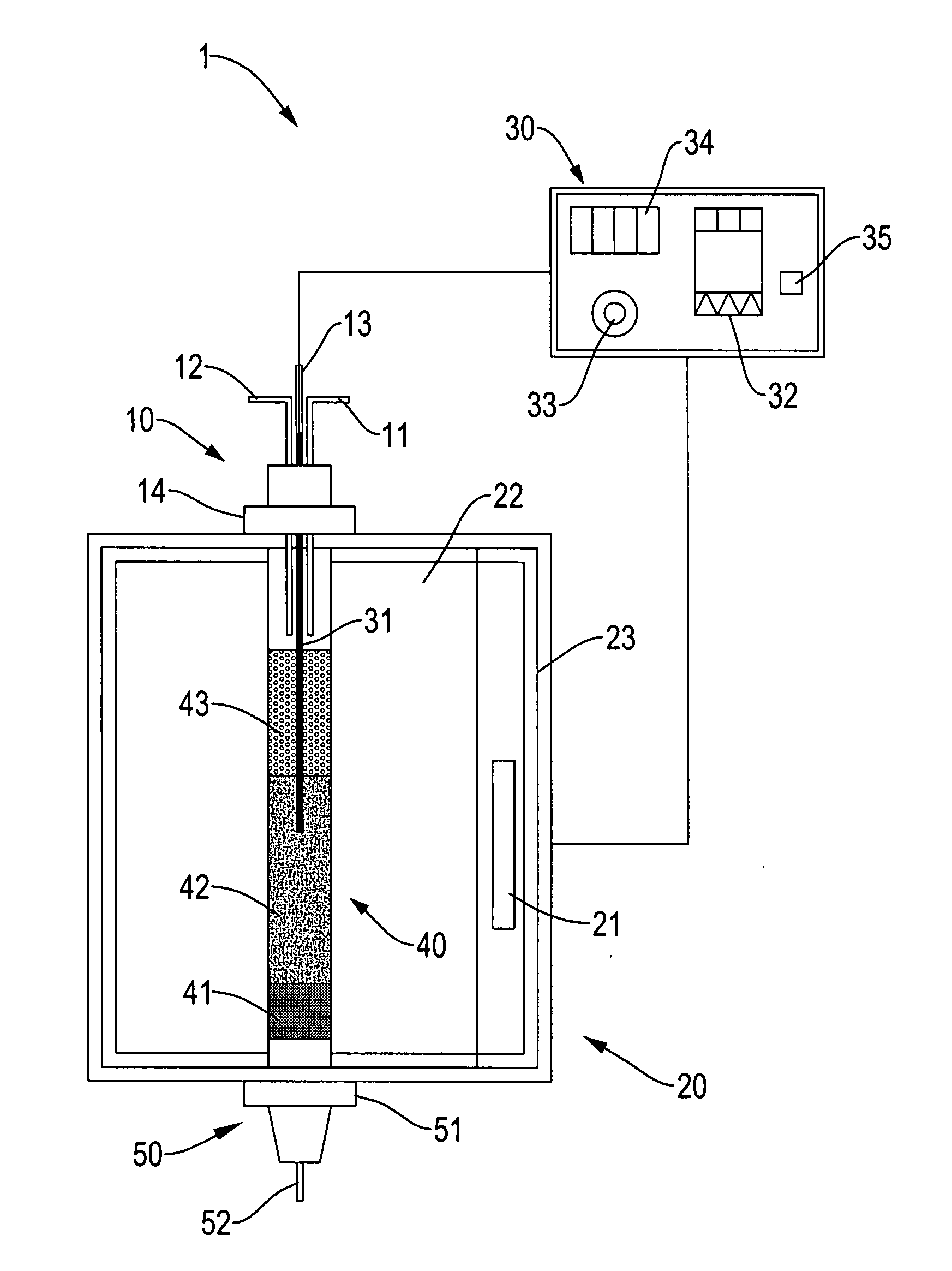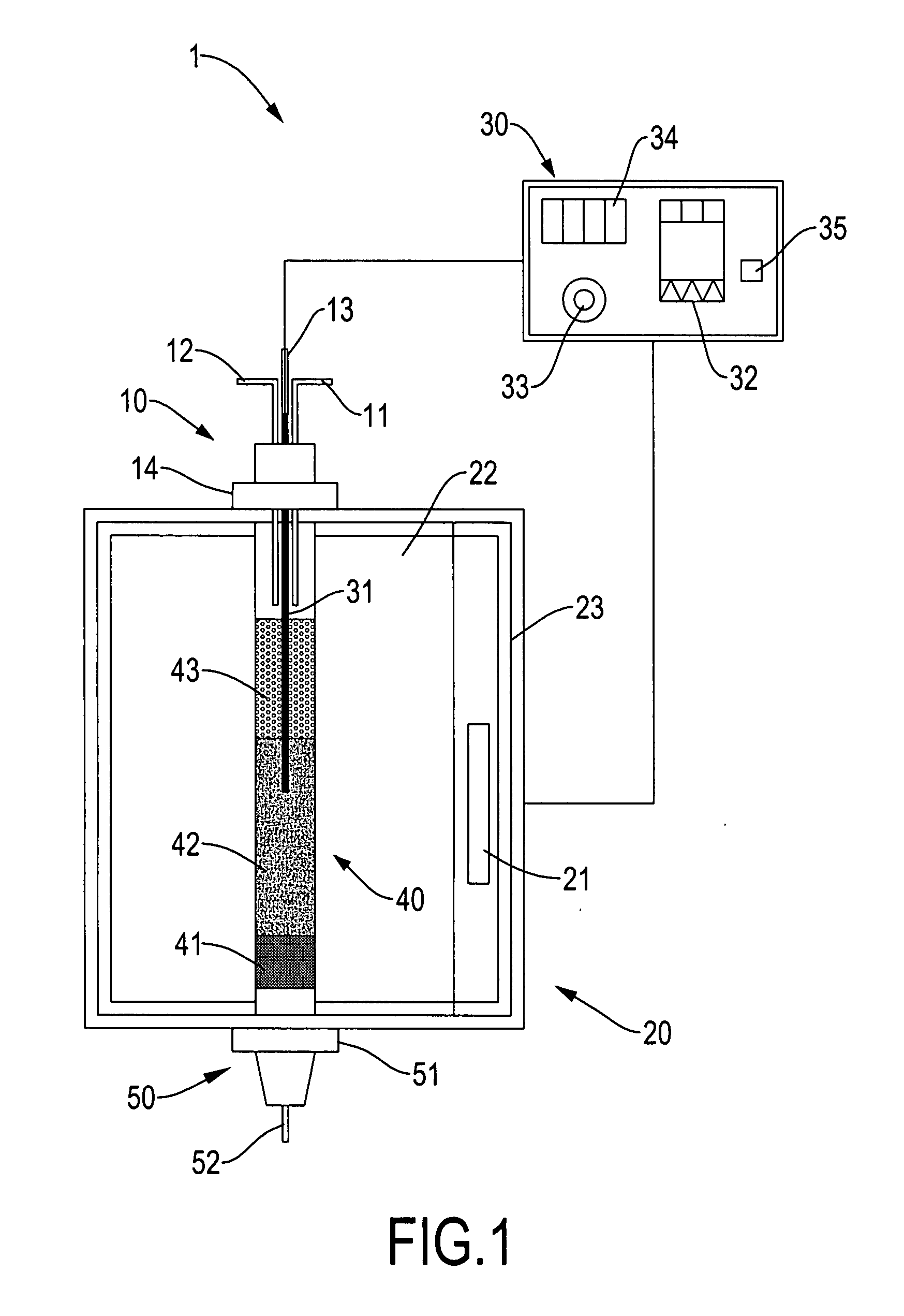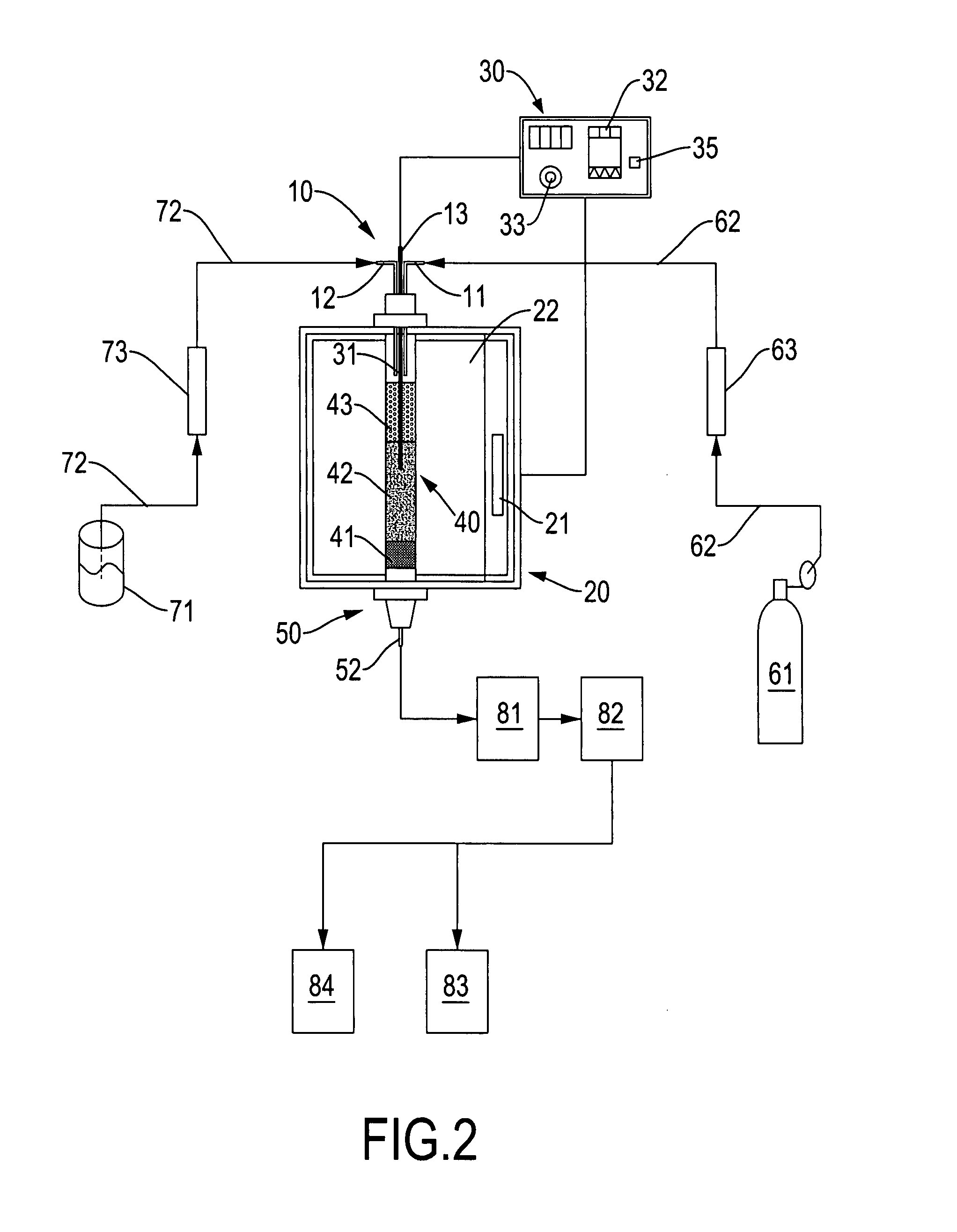Apparatus for and method of producing hydrogen using microwaves
a technology of apparatus and hydrogen, applied in the field of apparatus for and method of producing hydrogen, can solve the problems of slow rate of biological production, large electricity consumption of water, and small amount of hydrogen, and achieve the effect of reducing energy, time and spa
- Summary
- Abstract
- Description
- Claims
- Application Information
AI Technical Summary
Benefits of technology
Problems solved by technology
Method used
Image
Examples
example 1
Water Gas Shift Reaction
[0041]The gas source (61) was carbon monoxide and the liquid source (71) was water, which was vaporized in the heat storage layer (43) of the reaction tube (40) to form a water vapor. Water vapor mixed with carbon monoxide to form a mixed gas. The mixed gas flowed into the catalyst bed (42) to undergo water gas shift reaction and form a product gas including hydrogen, carbon dioxide and carbon monoxide. The volume flow rate ratio of water vapor to carbon monoxide in the reaction tube (40) was 8:1. The residence time of the mixed gas of water vapor and carbon monoxide in the catalyst bed (42) was 0.32 seconds. The catalyst bed (42) used a granular catalyst comprising 86˜92 wt % ferric oxide, 6˜10 wt % chromium hemitrioxide, 0.1˜2.0 wt % chromium trioxide and 1.5˜2.1 wt % copper oxide. With further reference to FIG. 3, a SEM photo of the granular catalyst showed a porous structure on the surface of the granular catalyst.
[0042]With further reference to FIG. 4, t...
example 2
[0043]The gas source (61) was nitrogen and the liquid source (71) was a mixed liquid of water and methanol, which were vaporized in the heat storage layer (43) of the reaction tube (40) and mixed with nitrogen to form a mixed gas. The mixed gas flowed into the catalyst bed (42) to undergo stream reforming reaction and form a product gas including hydrogen, carbon dioxide, carbon monoxide and methane. The volume ratio of methanol to water was 1:1 and a volume flow rate of the mixed liquid was 0.8856 cc / minute and a volume flow rate of nitrogen was 500 cc / minute. The catalyst bed (42) used a granular nickel system catalyst.
[0044]With further reference to FIG. 6, the graph showed concentrations of hydrogen (H2), carbon dioxide (CO2), carbon monoxide (CO) and methane (CH4) in a product gas after the stream reforming reaction with varying temperature from 200° C. to 400° C. When the reaction temperature was 200° C., hydrogen and carbon dioxide were produced at around 32% a...
PUM
| Property | Measurement | Unit |
|---|---|---|
| temperature | aaaaa | aaaaa |
| residence time | aaaaa | aaaaa |
| residence time | aaaaa | aaaaa |
Abstract
Description
Claims
Application Information
 Login to View More
Login to View More - R&D
- Intellectual Property
- Life Sciences
- Materials
- Tech Scout
- Unparalleled Data Quality
- Higher Quality Content
- 60% Fewer Hallucinations
Browse by: Latest US Patents, China's latest patents, Technical Efficacy Thesaurus, Application Domain, Technology Topic, Popular Technical Reports.
© 2025 PatSnap. All rights reserved.Legal|Privacy policy|Modern Slavery Act Transparency Statement|Sitemap|About US| Contact US: help@patsnap.com



